Tuxtla Gutiérrez, Chiapas 作者: 来源: 发布时间:2021-11-16
1.Population and Area
Pop: 598,710 (munip.)
Area: 412.40 km2 (munip.)
Elev: 522 masl
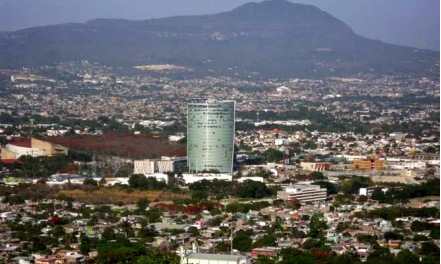
Tuxtla Gutiérrez location in Mexico within the state of Chiapas
https://goo.gl/maps/zki9xoKvhWJkuooW7
2. Natural geography
Nature and weather
Flora
Some native species are: sospó (almost disappeared), lanta, mojú, chucamay chincuya, 3 species of sapote, huisache, matilisguate, puyú, petsjoyó, flor de candelaria, jocote, masú, nambimbo, nanche, pomposhuti, puyuí, tziqueté, cuchunuc , cupapé, patzipocá and chipilín.
Fauna
Due to population growth, which has led to the deforestation of many green areas, many native species of the municipality have disappeared or are scarce. Tuxtla Gutierrez is crossed by a pilgrim bird emigration route from northwest to southeast.
Some native species are: Magpie, carrot, dove, rock pigeon, pijui, owl, American black vulture, opossum, armadillo, gray fox, various species of snake, cottontail rabbit, squirrel, many species of wild mice, bats, two species of iguana and the vampire.
https://www.ecured.cu/Tuxtla_Guti%C3%A9rrez_(M%C3%A9xico)
Köppen Classification: Tropical Savanna Climate
Tropical savanna climates have monthly mean temperature above 18°C (64°F) in every month of the year and typically a pronounced dry season, with the driest month having precipitation less than 60mm (2.36 in) of precipitation. In essence, a tropical savanna climate tends to either see less rainfall than a tropical monsoon climate or have more pronounced dry seasons than a tropical monsoon climate. Tropical savanna climates are most commonly found in Africa, Asia and South America. The climate is also prevalent in sections of Central America, northern Australia and North America, specifically in sections of Mexico and the state of Florida in the United States.
The Köppen Climate Classification subtype for this climate is "Aw". (Tropical Savanna Climate).
The average temperature for the year in Tuxtla Gutiérrez is 78.4°F (25.8°C). The warmest month, on average, is May with an average temperature of 83.7°F (28.7°C). The coolest month on average is January, with an average temperature of 73.4°F (23°C).
The highest recorded temperature in Tuxtla Gutiérrez is 107.6°F (42°C), which was recorded in March. The lowest recorded temperature in Tuxtla Gutiérrez is 44.8°F (7.1°C), which was recorded in January.
The average amount of precipitation for the year in Tuxtla Gutiérrez is 37.6" (955 mm). The month with the most precipitation on average is June with 8.6" (218.4 mm) of precipitation. The month with the least precipitation on average is January with an average of 0.0" (0 mm). In terms of liquid precipitation, there are an average of 93.3 days of rain, with the most rain occurring in September with 18.1 days of rain, and the least rain occurring in February with 0.6 days of rain.
https://www.weatherbase.com/weather/weather-summary.php3?s=987165&cityname=Tuxtla+Guti%E9rrez%2C+Chiapas%2C+Mexico&units=
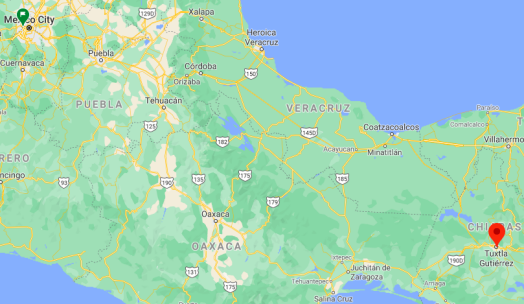
Getting there and around
Get there
By air – You can get to and from Tuxtla Gutierrez from Mexico City, Oaxaca, Villahermosa, Veracruz, Merida and Cancun using the main airport (Aeropuerto Teran), which is about a 5 mile (8 km) drive southwest of town. There is a smaller airport, only used in the summer as its high up in the hills and gets fog-bound in the winter. Taxis are available into town, and car rental desks are situated in the main exit area; book your rental car in advance for better rates.
By car – There are now fast roads connecting this region to Merida, Cancun, Oaxaca, Mexico City. The drive is a long one from Mexico City, but you’ll be rewarded by some stunning scenery. Most recently, a brand-new toll road links Tuxtla and San Cristobal, which is a quicker alternative to Carretera 190. Most people tend to fly to the region and rent a car locally, which is more sensible unless you have a specific reason for driving to Chiapas.
By bus – Regular long distance buses make the journey from Mexico City to Tuxtla Gutierrez daily; the journey takes 15 hours. Regional buses travel daily and frequently from Villahermosa, Campeche, Merida and Cancun to and from Tuxtla Gutierrez.
https://www.mexperience.com/travel/colonial/tuxtla-gutierrez
Car Rental – To explore Mexico’s provincial towns and cities—including its beach locations and the scenery and attractions near them— consider renting a car for your visit. Having your own car will give you more flexibility than using public transport options and, in some cases, offer you access to places which are otherwise difficult to visit without the use of a car.
COVID19 – International entry into Mexico from United States
Allowed for: All visitors arriving by air. Mexico land borders are closed to non-essential travel
Restricted for: There are no current restrictions.
Get around
Local Buses – Local buses and mini-buses (combis or micros) are available locally for a fraction of the cost of a taxi around town. You need to speak Spanish to be able to ask for directions or ask the driver to tell you where to get off.
Taxis – Taxis in most of Mexico’s towns and cities are not metered, so agree your price before you get in. Taxi travel is very affordable in Mexico, in comparison to the USA, Canada and Europe, and so provides a viable means of public transportation in Mexico. Your hotel can arrange taxis for you; some post their rates on a board in the lobby; taxi hotel rates are usually higher than cabs you hail off the street. If you speak Spanish, you will have a distinct advantage and be able to negotiate a price with the driver.
Uber is expanding rapidly across Mexico and now offers services in cities across the country, including: Mexico City, Toluca, Cuernavaca, Puebla, Querétaro, León, Aguascalientes, San Luis Potosí, Guadalajara, Monterrey, Hermosillo, Tijuana, Mexicali, and Mérida. Uber has been adding Mexican cities to its network every year, check for availability when you arrive at your destination in Mexico.
Cabify and Didi are also developing and currently operate in cities including Mexico City, Toluca, Monterrey, Puebla, Querétaro and Tijuana. Check for availability in the city you are visiting.
These services offer people with smartphones a way to book a cab through a mobile app for a pre-agreed price. Fares are comparable with Sitio type cabs, and sometimes trade at a premium to this when local demand increases.
https://www.mexperience.com/transport/taxi-travel-in-mexico/#51
3. ECONOMY
GDP: 55,726 M MXN (2010, metro area)
https://imco.org.mx/ciudades2010/ciudades/10_Tuxtla.html
4. Industry characteristics
The municipality is the only one in the state with a very low rate of economic marginalization. As of 2005, there were 121,312 residences, with 111,567 owned by their occupants. On average, there are 4.25 occupants per household, slightly lower than the regional and state averages of 4.52 and 4.85. Most homes have some kind of flooring, with less than ten percent having packed earth. Over 84% of homes have block sides. Over 70% have concrete slab roofs, with less than 15% having asbestos roofs. Over 98% have electricity, over 78% have running water, and about 94% have sewerage service.
Over 75% of the city's population is employed in commerce and services, which includes government. This is above the regional level of 53.36% and state level of 37.31%. Government at the state, federal and local levels has been one of the main sources of employment in the city since the 1970s. Although the city has 68 hotels with 2,874 rooms, it is not a major tourist attraction. Most visitors to the city are there on business or Mexican nationals. However, it is a main transportation hub for those going to other parts of the state, with its first-class bus station and new airport. Tourism during Holy Week adds over 150 million pesos to the state's economy, much of which passes through the city, with occupancy rates that rise fifty percent. Most foreign visitors through the city are young, especially from European countries such as France, Spain, Italy, Switzerland and England, who pass through the bus station. However, most of them do not explore the city itself, because tour guides often state there is nothing here to see.
Just over 19% of the population is dedicated to industry, manufacturing, construction and transportation. Just over two percent of the municipality's population is dedicated to agriculture, livestock and forestry compared to 26.14 of the region, and 47.25% of the state. Economic activities include commerce and the agricultural production of corn, beans, fruit, dairy cattle and domestic fowl.
The most affluent parts of the city are usually located to the west, along with shopping centers and suburban neighborhoods. Downtown is mostly a business location, while the poorest areas are spread throughout the north and east.
5. Attractions
Sumidero Canyon
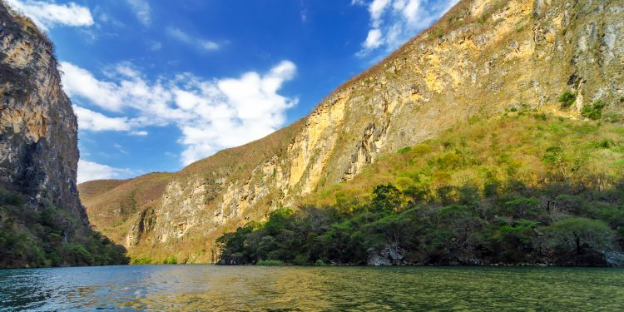
A few miles east of Tuxtla Gutierrez is the spectacular Cañon Sumidero, (Sumidero Canyon) created by the mighty Rio Grijalva which runs northwards through it.
Before the completion of the dam here, the canyon’s walls were even higher than they are now. Before the dam, the waters running through it were not navigable, even for the most skilled boatmen.
Once the river was dammed, the water levels rose dramatically, creating an extremely deep and serene river which tour boats and taxi boats navigate with ease. The Chicoasen hydroelectric dam, opened in 1981, is today one of Mexico’s most important sources of electric power.
Travel to one of the Miradores (vantage points) if you want to get a bird’s-eye view of the canyon; but if you really want to experience it properly, take a boat ride. The most common embarkation point is at Chiapa de Corzo, a short drive from Tuxtla Gutierrez.
The 2-3 hour round trip on the boat will take you on a spectacular journey through the canyon, with some of the walls towering 2,500 feet above you. The wildlife on display is spectacular, and your boat may take you on a tour past one or two caves in the area.
A new Ecological Park has been opened inside the canyon. The only way to get to the park is to take a boat there. The park offers a range of activity-based eco-attractions including the opportunity to visit the wildlife sanctuary, see local flora and fauna as well as a number of physical and sporting activities such as kayaking, mountain biking, abseiling, zip-line, swimming and more. See Key Attractions for full details and photo gallery.
The Sumidero Canyon is a truly spectacular experience which should not be missed when you are traveling in this area.
https://www.mexperience.com/travel/outdoors/sumidero-canyon
Miguel Álvarez del Toro Zoo
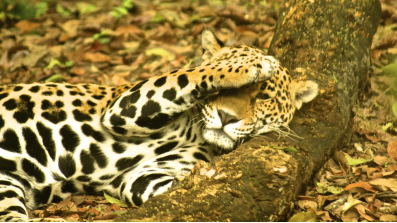
Zoologico Miguel Alvarez del Toro is situated on the south side of the city on a wooded hill. Because of Chiapas’ wide natural diversity, this zoo houses a varied collection of wildlife, flora and fauna from the state. The emphasis at this zoo is one of conservation, which is why it takes its name from one of Mexico’s foremost conservationists; the cages are large and the standards for the animals’ welfare are high.
Large cats, macaws, toucans, monkeys all native to Chiapas are some of the creatures you’ll see here; for the brave, there is the snake house, which houses a delightful collection of snakes, spiders and other insects you may meet if you plan to venture out into the jungles in Chiapas.
Colonial Center
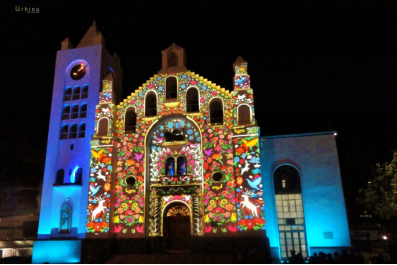
The main attractions downtown are to be found off the Zocalo (main square) also known as the Plaza Civica (Civic Plaza).
The Whitewashed Catedral de San Marcos is on the Plaza de San Marcos, adjacent to the main square; northeast of this is the Palacio de Gobierno (Government Palace) the main seat of political and administrative power in the state. The Palacio Municipal (Municipal Buildings) face the cathedral on the north side of the Civic Plaza.
The Plaza de San Marcos is often filled with artisans and other ambulant vendors selling arts and crafts made in the highlands of Chiapas.
Eight blocks west of the center you’ll find Jardin de la Marimba, where you’ll often find Marimba bands playing every evening in the open air as people take an evening stroll around the park.
Parque Madero is about a mile northeast of the center and hosts the Regional Museum of Chiapas (Museo Regional de Chiapas), the city’s principal theatre (Teatro de la Ciudad) as well as a playground and funfair for children at the Parque de Convivencia Infantil.
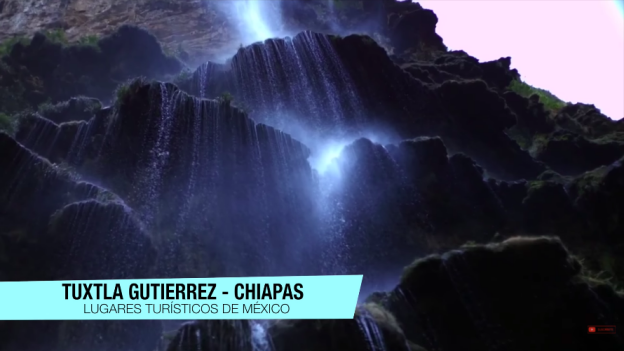
Tuxtla Gutierrez Chiapas - Mexico Travel Tourism
https://youtu.be/BugYbRH6_JU
6. History
The Zoques made the first pre-Hispanic settlement at the site. They named the valley area name "Coyatocmoc", which means “land or house of rabbits”. The Aztecs intruded into the area and named it "Tuchtlan", which means the same thing. “Gutiérrez” was added to the city's name in 1848 to honor Joaquín Miguel Gutiérrez, a Conservative politician according to a legend.
After the Spanish conquest of the Aztec Empire, and the subjugation of the Chiapa people in 1528, the Dominicans constructed a monastery in nearby Tecpatán, which today is an independent municipality. There is no official founding date for Tuxtla, but it is known that in the middle of the 16th century, these monks gathered dispersed Zoques in the valley into communities centered on churches. Today's Saint Mark's Cathedral is the parish church founded by the Dominicans for one of these communities in 1560.
The village was officially recognized as a villa by King of Spain in 1813 with a population of about 5,000, three-quarters of which were Zoques. In 1821, the authorities of the villa proclaimed independence from both Spain and the regional colonial government of Guatemala, along with other areas in what would become Chiapas. However, this declaration was not accepted by either Guatemala or Mexico.
The first library in the entire state was founded here in 1910.
During the Mexican Revolution, a battalion called "The Sons of Tuxtla" was formed in 1911, with Captain Julio Miramontes assassinated in 1912. Troops supporting Venustiano Carranza took over in 1914, led by Agustín Castro. Chiapas was reorganized into the municipality system in 1915, Tuxtla Gutiérrez becoming the head of one of these and Noé Vázquez the first municipal president. The city remained the state capital. Reaction against Carranza's policies was headed by the “Mapaches”, a group of landholders in the state who objected to the loss of their privileges and the redistribution of their lands. They burned the state government building, destroying its archives in 1915. General Salvador Alvarado and 2500 troops fought the Mapaches commanded by General Tiburcio Fernández Ruiz. Catholic churches were closed and images of saints were burned in the city in 1934.
In 1941, the municipal government moved from the old building on El Triunfo Street in the Santo Domingo neighborhood to the corner of Avenida Central and Calle 2ª Poniente on lands that belonged to the city's first municipal president. Here a new "municipal palace" was built in Neoclassical style. However, the municipal palace was moved again to its current location in 1982, and the Neoclassical building was given to the Federación de Trabajadores del Estado de Chiapas.
The Diocese of Tuxtla was created in 1965, which elevated the parish of San Marcos (Saint Mark) to a cathedral. Tuxtla Gutierrez became the hometown of actress Alejandra Meyer, whose acting career began during the 1960s. She is best known as Dona Chata on the television series Dr. Candido Perez. The first Feria de Chiapas was held in 1980. The municipality suffered 38 wildfires in 1988. John Paul II visited the city in 1990.
During the 1990s, a part of the state of Chiapas was wracked by the EZLN or Zapatista uprising. While most of this group's activity was in rural areas of the state, Tuxtla was also affected by it. As many as 10,000 Zapatista sympathizers protested in the city in 1998 to push federal officials to honor the 1994 San Andrés Accords and to push for new gubernatorial elections and other demands. The political instability pushed many indigenous into the municipality from more rural areas in the latter half of the decade. In 1998, PRD politician, EZLN activist and leader of the Asamblea Estatal Democrática del Pueblo Chiapaneco Rubicel Ruiz Gamboa was assassinated in the city. It is thought the act was in response to Ruiz Gamboa's work in land redistribution in the state's La Frailesca region.
In the 1990s, Mexicana airlines stopped service to Tuxtla, leaving only Aerocaribe. A major crash killing nineteen persons led to protests and the reinstatement of service to the city by Mexicana in 2000. In 2011, the government of Guatemala announced that it would open a consulate in the city to support its nationals who cross through Mexican territory or reside here. The government noted the problems that many Guatemalans, especially those who enter Mexico illegally, have had in the country. A tractor trailer with 219 illegal immigrants was stopped in the municipality in early 2011. Most were Guatemalan and almost all from Central America but there were also people from Sri Lanka and Nepal. The migrants were detected by using portable X-ray on the passing truck.
7. Other Information: culture and gastronomy
The two most important local celebrations are the Feria de Saint Mark and the Feria Chiapas. The Feria de San Marcos (Saint Mark's Fair) occurs each April in the center of the city, honoring the patron saint of Mark the Evangelist. It includes offerings, fireworks in frames called "castillos" (castles) and pilgrimages for four days starting on the 25th. The Feria Chiapas includes bullfights, horse racing, cockfights and exhibitions of the many products of the state, including crafts, manufactured goods and agricultural products. It is held on the next to last Sunday of November through the first Sunday of December. Reflecting the area's Zoque heritage is the Zoque Carnival and a ritual called the "lowering of the virgins" which occurs in Copoya. Other important celebrations in the municipality include the San Roque, San Jacinto, San Pascualito, San Francisco, Santo Domingo and the Virgin of Guadalupe.
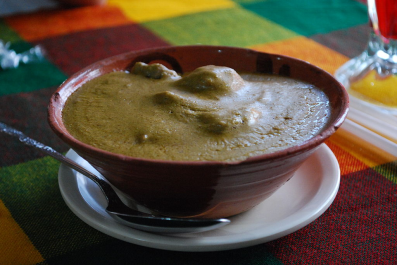
Much of the cuisine of the municipality reflects that of the rest of the state and includes pictes (a sweet corn tamale), la chispota (beef with chickpeas and cabbage), niguijuti (pork with mole sauce), sopa de pan (bread with broth and vegetables), cochito (pork in adobo sauce), chanfaina (lamb innards with rice), a legume called patashete, and traditional Chiapas tamales made with chipilín. Local drinks include pozol, taxcalate, agua de chía tashiagual and pinole. Some local specialties include carnes parrilladas (grilled meat platter), carne molida tartars (spicy ground meat "cooked" with lime juice with onions, tomatoes and cilantro).
8.Contact Information

City Mayor: Carlos Orsoe Morales Vázquez
Contact number: +52 (961) 612 5511, ext. 2005
Govt. Office Address: Calle Central y 2ª Norte S/N, Palacio Municipal 1er Piso; Colonia Centro
Facebook: https://www.facebook.com/profile.php?id=100008838046861
Website: https://www.tuxtla.gob.mx
E-mail: presidencia@tuxtla.gob.mx
